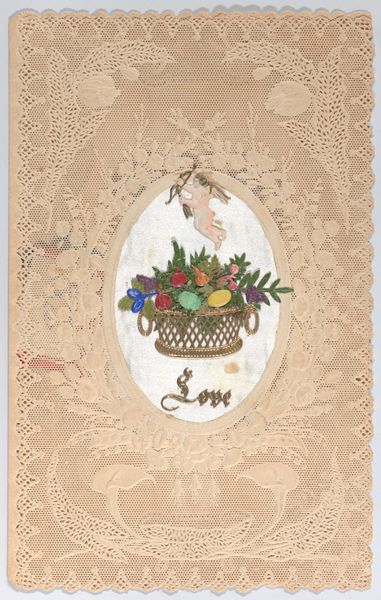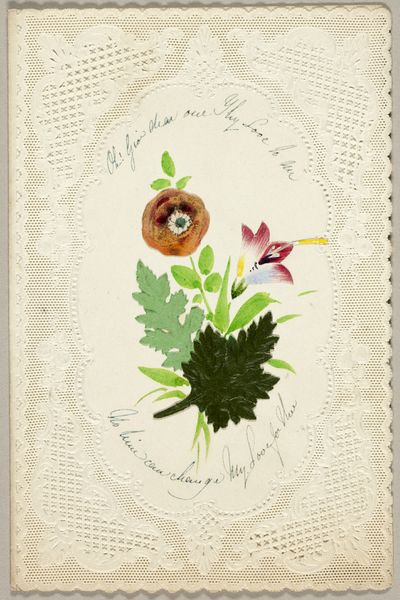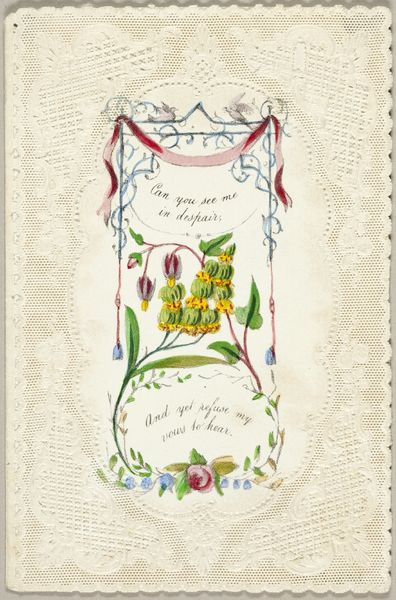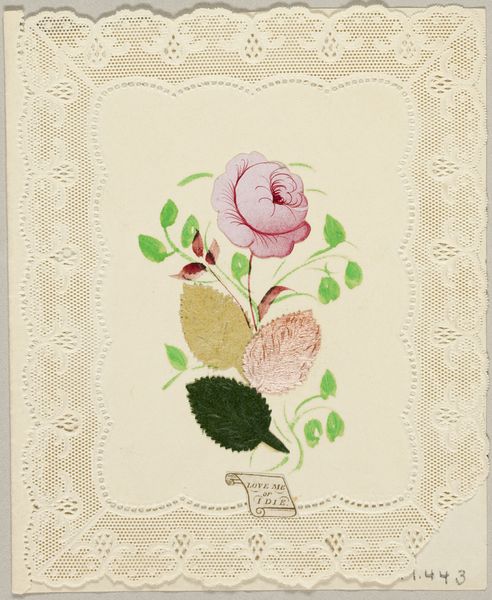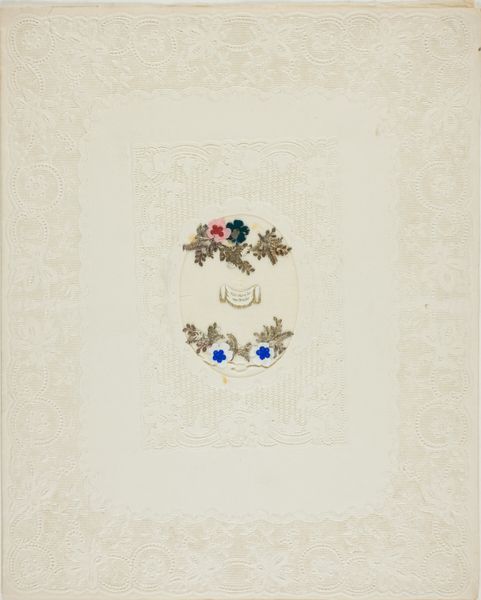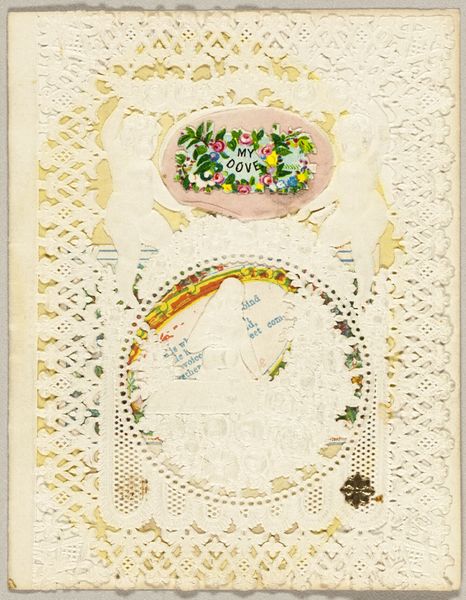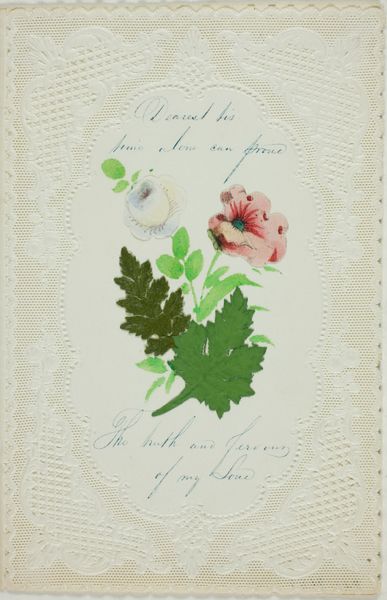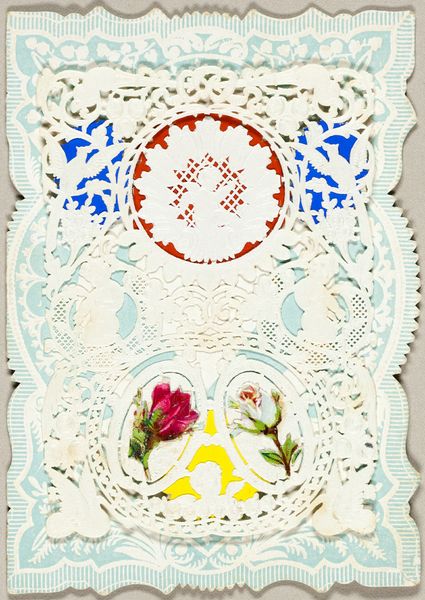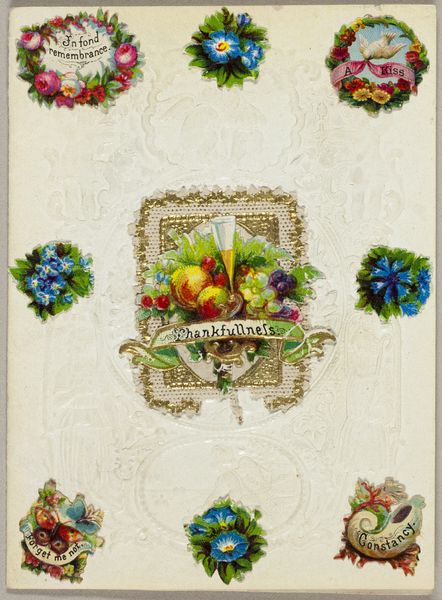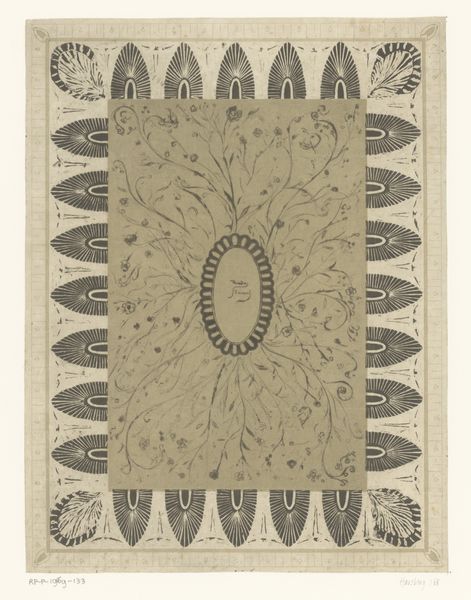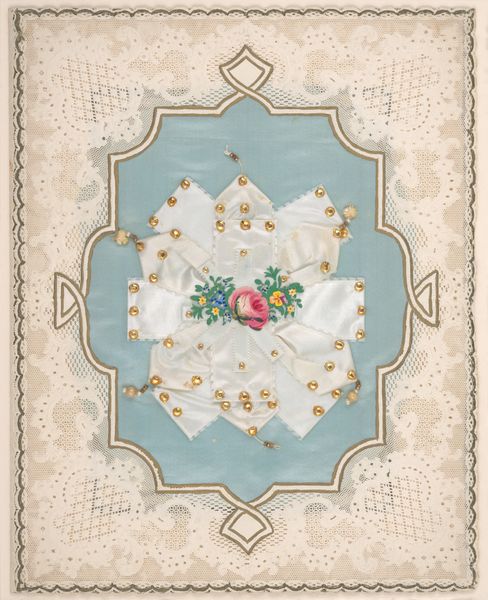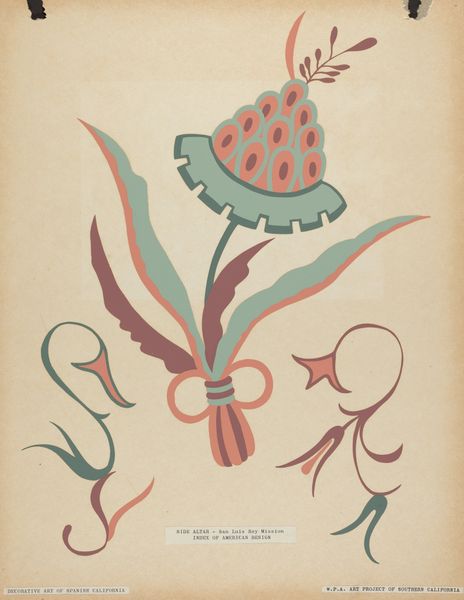
drawing, graphic-art, print, paper
#
drawing
#
graphic-art
# print
#
paper
#
romanticism
#
miniature
Dimensions: 193 × 124 mm (folded sheet)
Copyright: Public Domain
Editor: This is "Be Mine (Valentine)" by Joseph Mansell, made sometime between 1845 and 1850. It's a print on paper, a miniature artwork. It's so delicate. What can you tell me about it? Curator: Well, let’s start with its material form. The printmaking process itself, especially its proliferation in the mid-19th century, democratized art and expressions of affection. Instead of a unique, hand-painted item for the wealthy, we see a mass-produced object aimed at a wider, more diverse audience. Think about the paper used: What was its quality? How did it reflect Victorian-era values surrounding sentimentality and mass production? Editor: That's an interesting point about mass production. So, it wasn’t just about expressing love but also about a shift in how things were made and who could participate? Curator: Precisely. Consider the labour involved in creating the printing plate, in comparison with creating unique paintings. Someone designed it, someone engraved it, someone printed it, perhaps even hand-coloured it afterward. What social class did these people belong to? Did the accessibility of creating and possessing prints upend previous power dynamics and class stratification when expressing courtship, friendship, and family relationships? Editor: I never thought about it that way. I guess I always associated Valentine's cards with personal, heartfelt sentiments, but you're making me realize the entire production and consumption chain behind it. So it challenges this notion of pure, individual emotion? Curator: Exactly! By considering the materiality, production, and distribution of this small token, we reveal how social and economic factors intertwine with personal sentiment. Even the seemingly innocent act of sending a Valentine reveals a whole world of labour and commodification. What does that tell us about how social structures affected private relationships at that time? Editor: I see now. This little card tells a much bigger story than just “Be Mine”. Thank you! Curator: You're welcome! It's often through these everyday objects that we can grasp broader societal shifts and values.
Comments
No comments
Be the first to comment and join the conversation on the ultimate creative platform.
